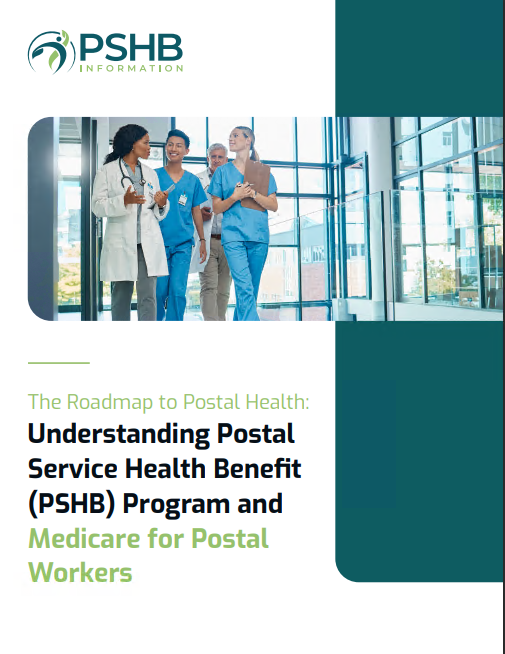Key Takeaways:
- PSHB Enrollment for 2025 is officially open, with Open Season from November 11 to December 9, 2024. This is your chance to evaluate and enroll in the plan that meets your needs.
- Avoid Surprises: Familiarize yourself with how PSHB plans may differ from FEHB coverage to make a fully informed decision before the January 1, 2025, launch.
Get Ready: PSHB Open Season Has Begun!
If you’re a United States Postal Service (USPS) worker, 2025 marks a significant shift in your healthcare coverage. The Postal Service Health Benefits (PSHB) program will officially replace the current Federal Employees Health Benefits (FEHB) system on January 1, 2025. With PSHB Open Season running from November 11 to December 9, 2024, now is the time to assess your options and make any necessary plan changes.
What Exactly Is the PSHB Program?
The PSHB program is a health benefits initiative designed specifically for USPS employees, annuitants, and their eligible family members. Unlike the broader FEHB program, PSHB tailors its coverage to the unique needs of postal workers, streamlining benefits and simplifying healthcare choices. It’s essential to note that while current FEHB enrollees will be automatically enrolled in comparable PSHB plans, reviewing your options is critical to ensuring your plan matches your needs.
Key Dates to Remember
Mark your calendar with these important PSHB milestones:
- Open Season Dates: November 11, 2024 – December 9, 2024
- Effective Date for PSHB Coverage: January 1, 2025
By staying on top of these dates, you can avoid last-minute stress and make a well-thought-out decision for your healthcare coverage.
Why PSHB Is Different from FEHB
Understanding the difference between PSHB and the current FEHB system is crucial for making an informed choice. While PSHB aims to simplify the process for postal employees, it also comes with its own set of rules, benefits, and network options. This means that while you might find similarities with your current plan, there could be notable differences, such as provider networks, prescription drug coverage, and coordination with other healthcare plans like Medicare.
PSHB Enrollment Tips for USPS Workers
1. Start Early
Don’t wait until the last few days of Open Season to review your plan options. Begin researching early in the Open Season period to give yourself enough time to understand the available choices and make an informed decision. The PSHB website and the official enrollment portal will provide detailed plan comparisons, making this task easier.
2. Evaluate Your Current Healthcare Needs
Assess your current healthcare needs and consider whether they may change in the coming year. Think about factors such as:
- Regular visits to specialists or specific medical facilities
- Prescription drug requirements
- Dependents’ health needs
By knowing your requirements, you can better determine which PSHB plan offers the coverage that fits your situation.
3. Understand Out-of-Pocket Costs
While I won’t go into specific numbers for private plans, it’s important to understand that general costs like premiums, deductibles, and out-of-pocket limits can vary between plans. Review these details closely. Even if your new PSHB plan seems similar to your current FEHB coverage, subtle differences can impact your overall spending.
4. Review Medicare Coordination
For USPS employees or annuitants who are Medicare-eligible, this is a big one. If you or a covered family member is eligible for Medicare, enrolling in Part B may be a requirement to maintain your PSHB coverage, especially for those who retire on or after January 1, 2025. Understanding how PSHB coordinates with Medicare can save you from unexpected costs and help you maximize your benefits.
How to Navigate the PSHB Open Season
Step 1: Access the Enrollment Portal
Start by ensuring you have access to the official PSHB enrollment site or any designated USPS platforms. This is where you’ll find plan comparisons and information needed to make your choice.
Step 2: Compare Plans
Look at the different PSHB options available. Although there may be similarities to your current FEHB plan, PSHB plans might include specific network changes, provider lists, or additional benefits.
Step 3: Check Plan Networks
Make sure your preferred healthcare providers and facilities are in-network for the PSHB plan you’re considering. Out-of-network services can result in higher out-of-pocket costs, which might not be ideal for your budget or medical needs.
Common Questions Answered
What Happens If I Don’t Enroll? If you’re currently enrolled in an FEHB plan, you will be automatically transferred to a comparable PSHB plan. However, this default option may not be the best match for your unique healthcare needs, so it’s always best to review and make an informed choice during Open Season.
Do I Have to Enroll in Medicare? If you or your dependents are Medicare-eligible and retired after January 1, 2025, enrolling in Medicare Part B may be necessary to keep your PSHB coverage. For those who retired before this date and aren’t enrolled in Part B, the requirement might not apply, but reviewing your specific circumstances is essential.
Plan Features to Focus On
1. Prescription Drug Coverage
Review each plan’s formulary to see if your medications are covered and at what cost. PSHB plans might differ in their approach to prescription benefits compared to FEHB.
2. Wellness Programs
Some PSHB plans may offer wellness initiatives, such as preventive health services or special programs aimed at improving health outcomes. These can be valuable if you’re looking to enhance your overall well-being.
3. Vision and Dental Options
While primary health benefits are at the forefront, it’s worth considering whether your PSHB plan includes or provides add-ons for vision and dental coverage. Ensure you understand whether you need separate enrollment for these services.
Final Thoughts Before Submitting Your Choice
Before Open Season ends on December 9, 2024, make sure you’ve thoroughly reviewed all aspects of your PSHB plan. Check for any requirements related to Medicare, verify that your preferred providers are in-network, and confirm that the plan meets your anticipated healthcare needs for the upcoming year. Once you’re confident, submit your plan selection, and rest assured knowing you’ve prepared for a smooth transition into 2025.
Maximize Your PSHB Benefits for 2025
Making an informed choice now can set you up for a successful and health-focused year. Be proactive, consider all aspects of your health needs, and ensure your PSHB plan is ready to support you and your family in 2025 and beyond.









